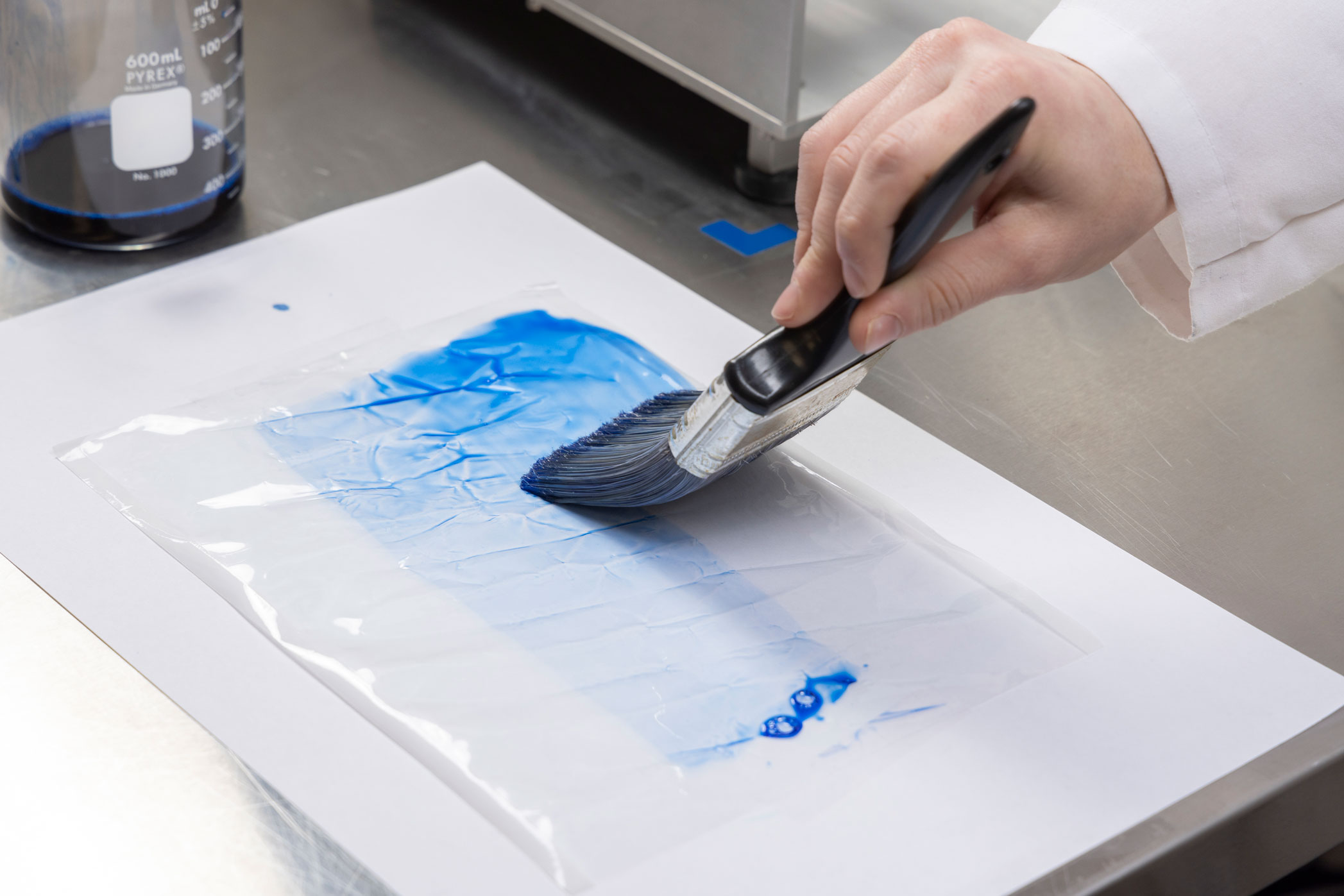
Gelbo Flex Test
Gelbo Flex Testing is intended to subject a target material to the fatigue of repetitive twisting, crunching, and flexing motions under controlled conditions. The material can then be examined for the presence of any flex cracks or pinholes. To perform a Gelbo test, packaging material is repeatedly twisted and crushed and then evaluated for flex failure. The flexing action performed during the test consists of a twisting motion combined with a horizontal compression motion that provides repetitive strain to test the flex resistance of the flexible barrier material for the entirety of the test. Flex failure is typically determined by the appearance of pinholes or integrity failures in one or more plies of a multi-ply structure, or the breakdown of barrier properties. The commonly used standard for Gelbo flex testing is ASTM F392, though it can vary. The number of cycles in a Gelbo test typically range from 2700 cycles (Condition A) down to 20 cycles (Condition E) to simulate everything from full flexing to partial flexing.

Industry Application
A Glebo flex tester is commonly used to evaluate a material’s ability to resist flex cracking. It is used early in the packaging material selection process to compare one film to another. This can be a leading indicator of the material’s ability to perform through a transit test.
Frequently asked questions
How is a Gelbo flex test performed?
To perform a Gelbo flex text, packaging material is repeatedly twisted and crushed and then evaluated for flex failure. The flexing action performed during this test method consists of a twisting motion combined with a horizontal compression motion that provides repetitive strain to test the flex resistance of the flexible barrier material for the entirety of the test.
What does Gelbo flex testing determine?
This practice is valuable in determining the resistance of flexible-packing materials to flex-formed pinhole failures.
Is Gelbo Flex Testing a required package test?
Gelbo Flex test is not a required package test. It is mainly used for Research and Development purposes.
